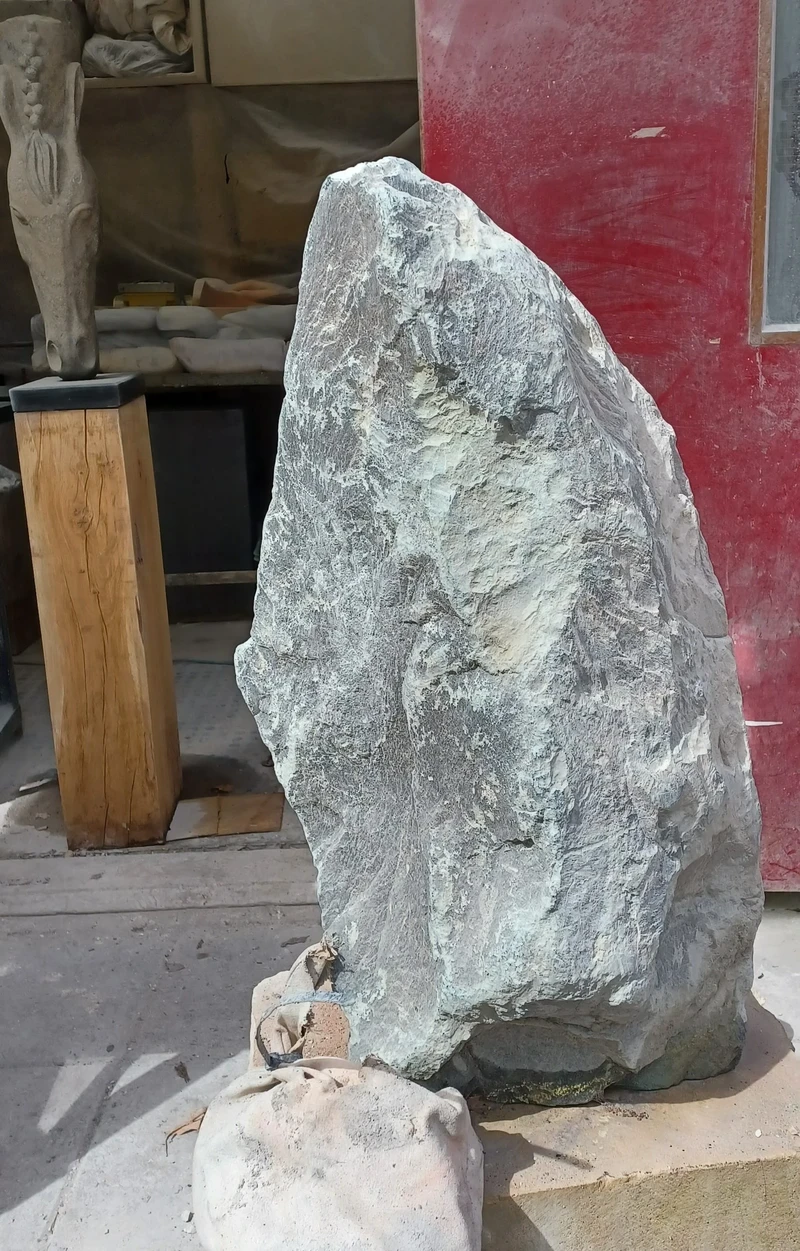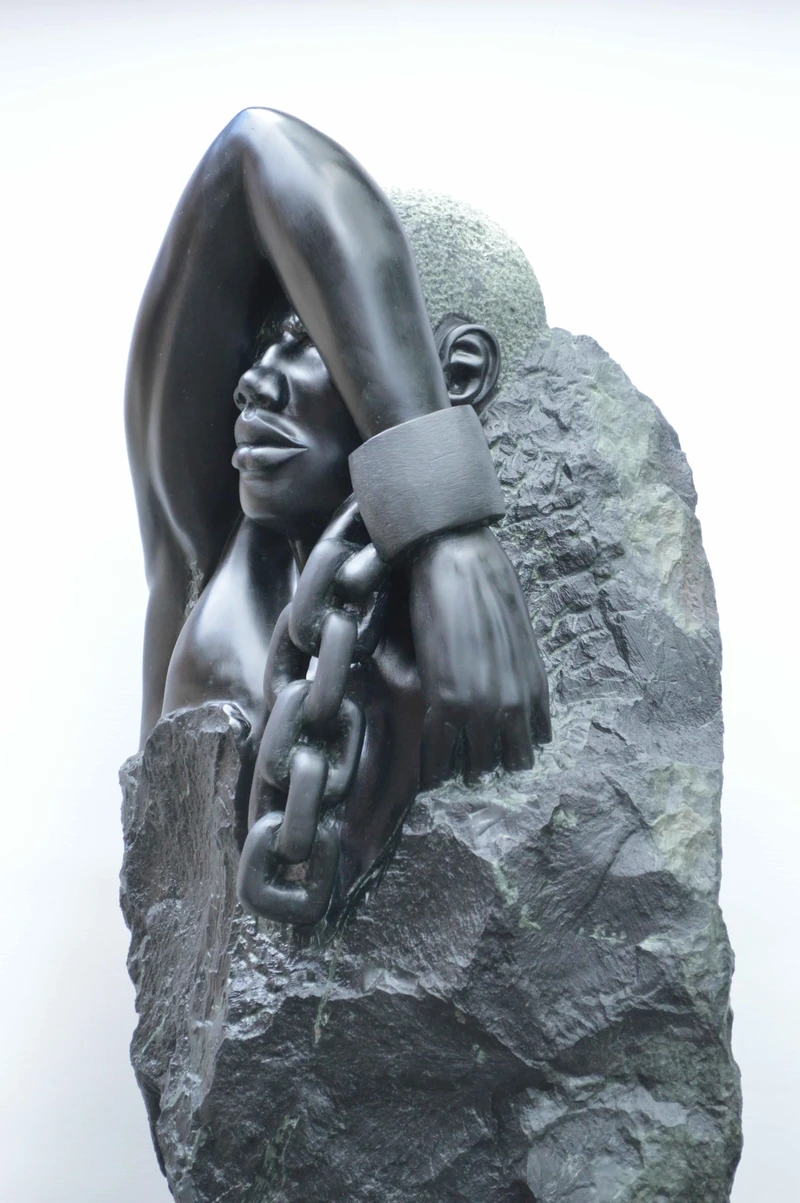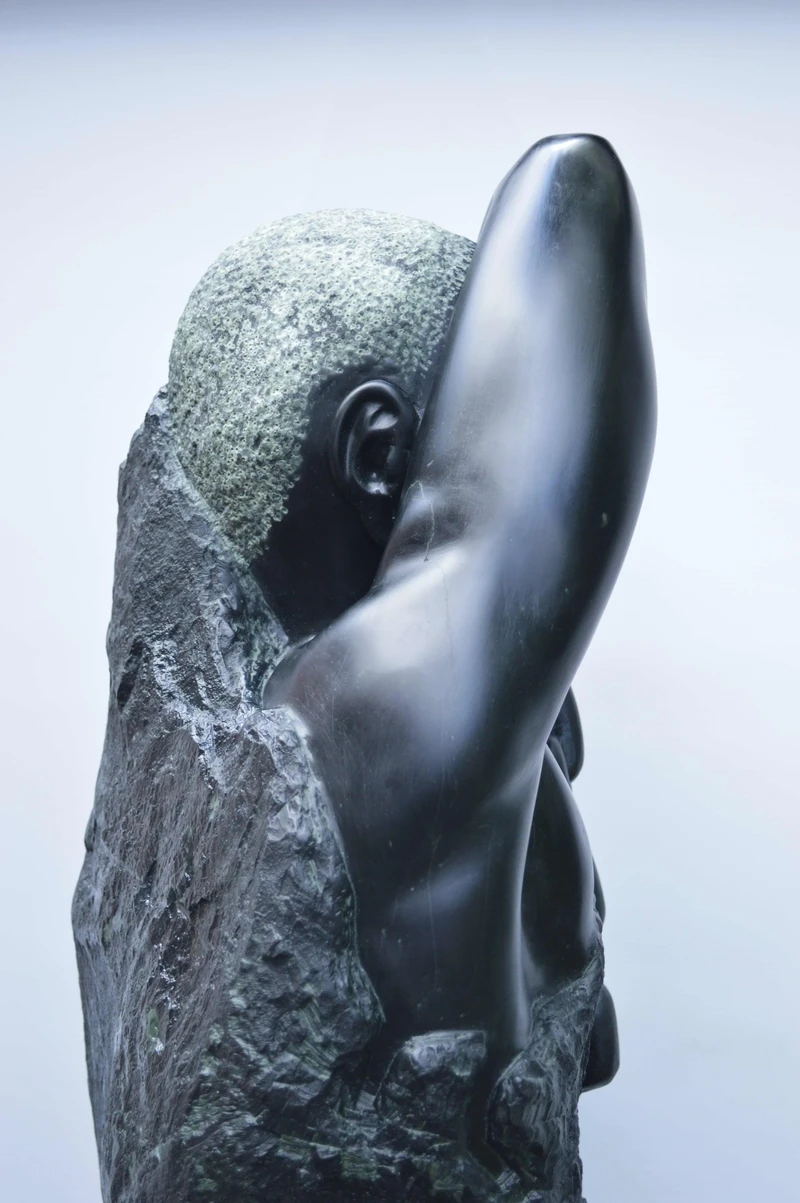I could sense pain and movement in this soapstone.

After visiting Gloucester Cathedral I heard about a coming exhibition, “Threads: Beating back the past”, based on the oldest-surviving annotated slave song found in Gloucester Archives which dates from c1775.
The manuscript captures the words and music of the slaves working on the sugar plantations in Barbados. It was written down more than 200 years ago by anti-abolitionist Granville Sharpe. In the 1970s it was placed in Gloucestershire Archives and in 2017 was listed in the UNESCO Memory of the World.
Roger Gibbs musically interpreted the song, which inspired my piece.
I had difficulty deciding which way the arm went (left to right or vice versa). Interestingly Michelangelo had a sculpture called Young Slave who also had his arm raised in defence.


The Anti-Slavery Partnership states that, ‘In 2021, there were 12,727 referrals of slavery in the UK into the NRM (the UK’s National Referral Mechanism) compared to 3,804 in 2016.’ It is clearly a growing issue and these figures are likely to be only the tip of the iceberg to use a metaphor. The song and sculpture are a reminder that the fight against modern day slavery still continues globally.
Stone: Supplied by Mcmarmilloyds
Title: Slave Song
Date completed: June 2024
Medium: Soapstone
Dimensions: 72cm x 38cm x 24cm
